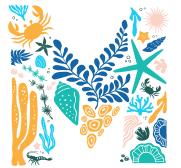We took a Biology trip to the estuary at Warrington to learn and explore about how the estuary system works and how species adapt to their environment, specifically cockles. We learned how to analyse the estuary. And it was worth going because because we did a transect and a metre squared. It was shallow warm and nutrient-rich. The perfect place for juvenile and baby fish to grow up.
Estuaries and their surrounding wetlands are bodies of water usually found where rivers meet the sea. Estuaries are home to unique plant and animal communities that have adapted to brackish water, a mixture of fresh water draining from the land and salty seawater. This means that Blueskin Bay Warrington is formed where freshwater from rivers and streams mixes with salt water and flows into the sea. The habitat consists of mudflats, coastal wetlands formed when mud is deposited by high and low tides or rivers. The aim of our investigation of Blueskin Bay was to study the community pattern of that place. We observed a variety of life there, including cockles, oysters, mud snails, mud whelks, crabs and wedge shells.
We found a lot of cockles by digging into the sand. After we collected all the cockles we went back to the surf club and boiled them up in a pot and in the microwave. The cockles were super tasty.
Sally Carson commented: Great effort and yes… estuaries are really important habitat for juvenile fish and a variety of invertebrates. Lots of marine species like cockles too! Like crabs, sea stars fish etc. You can age the cockles by looking for the growth ridges.

